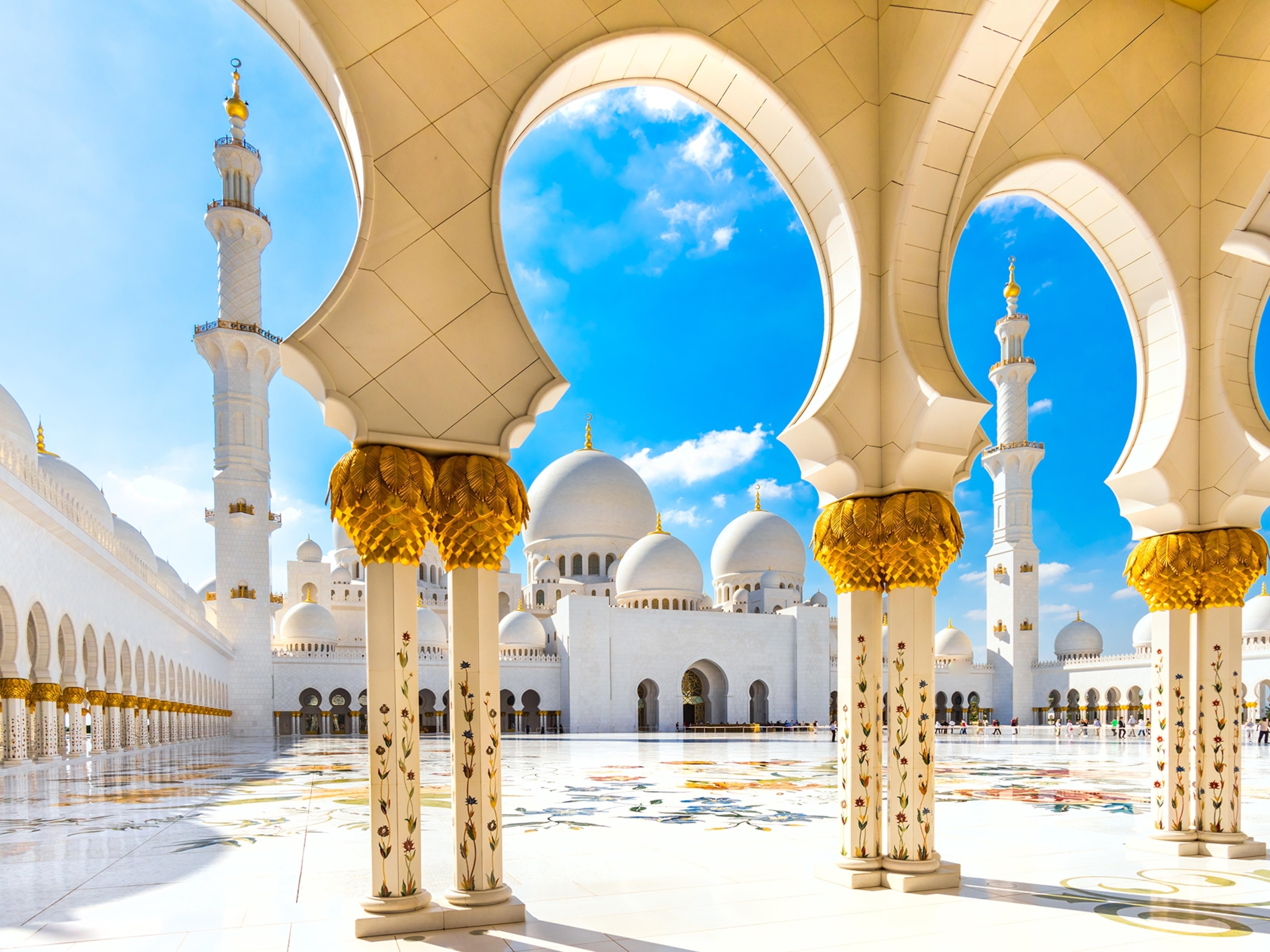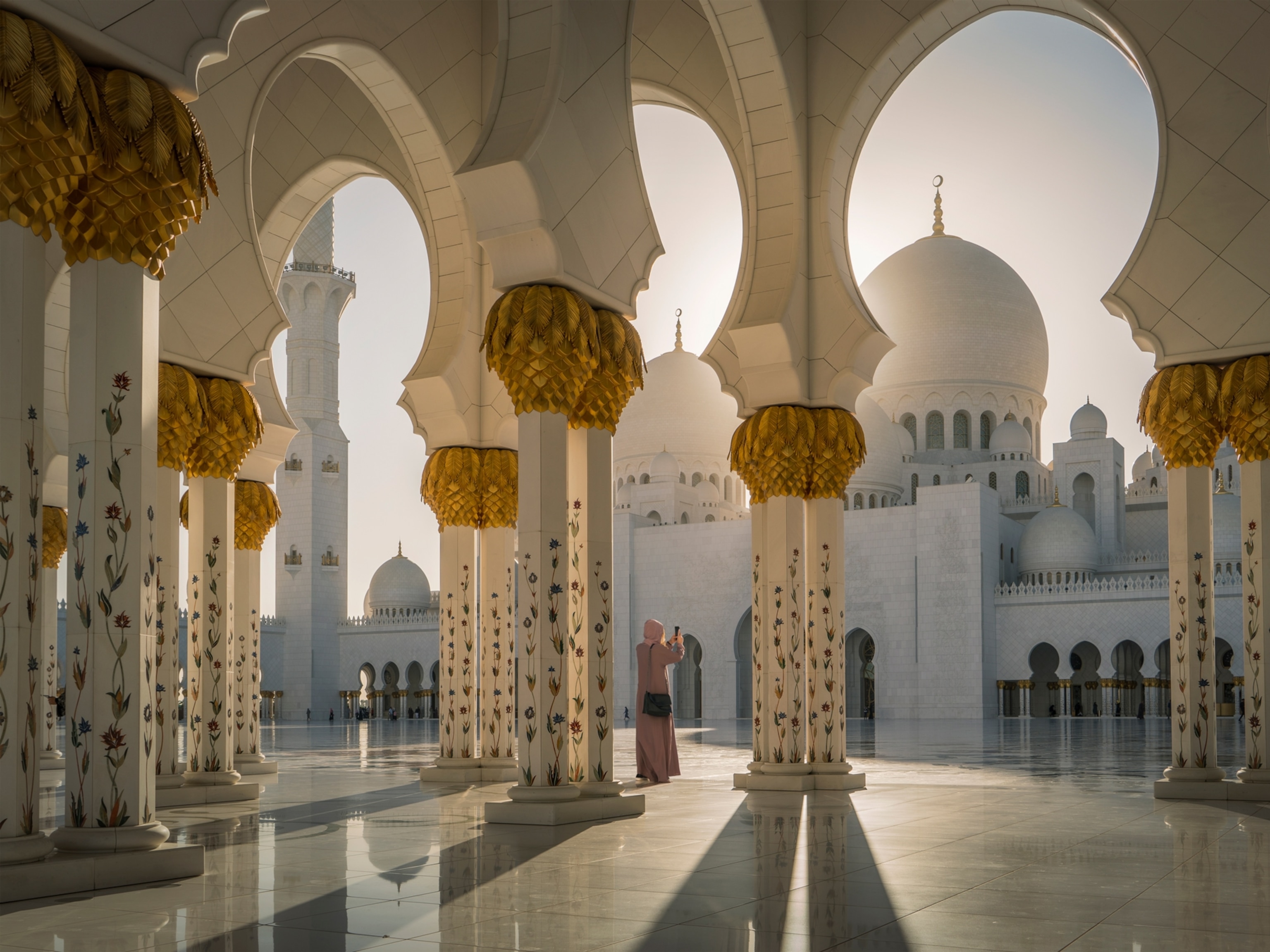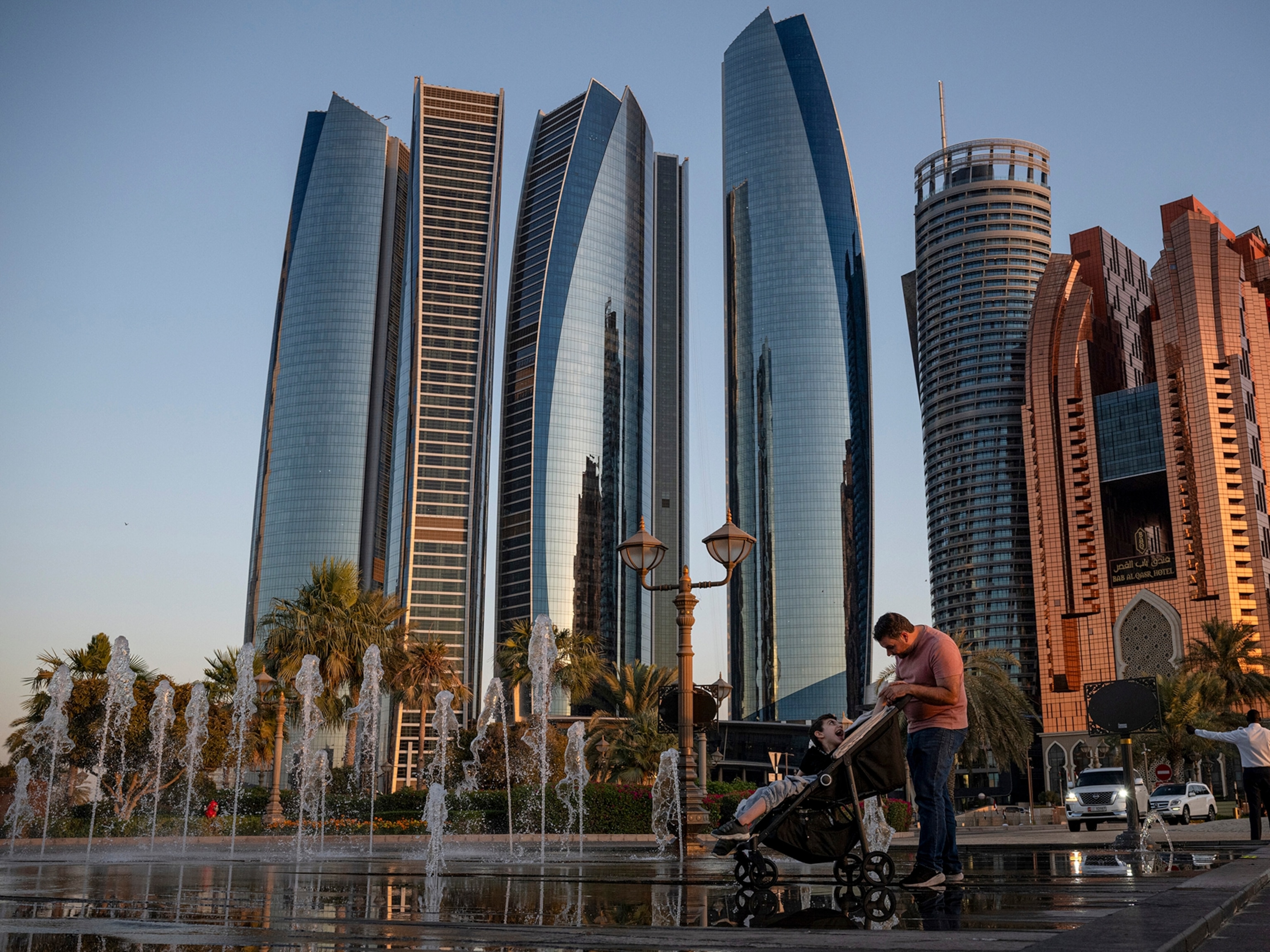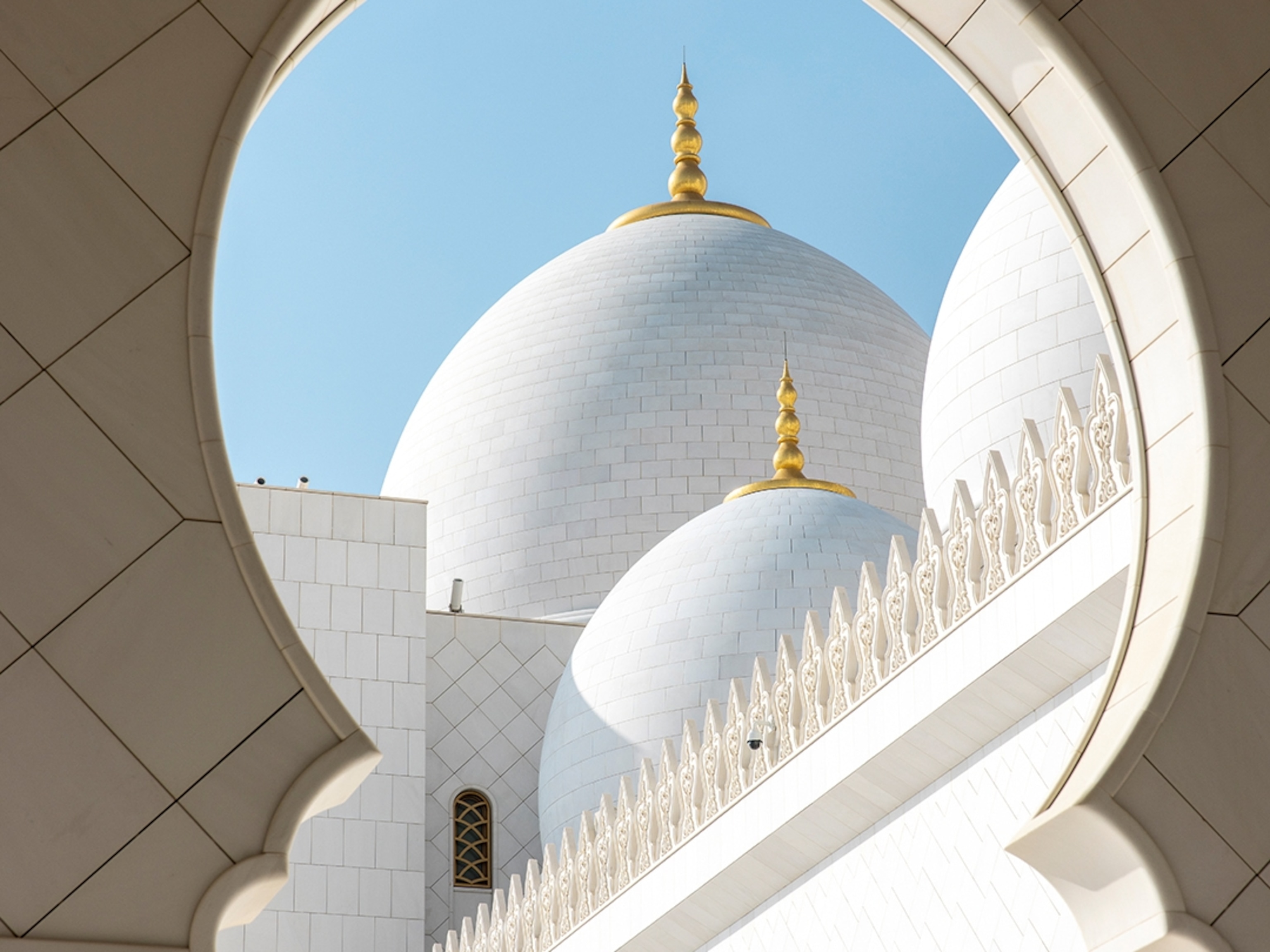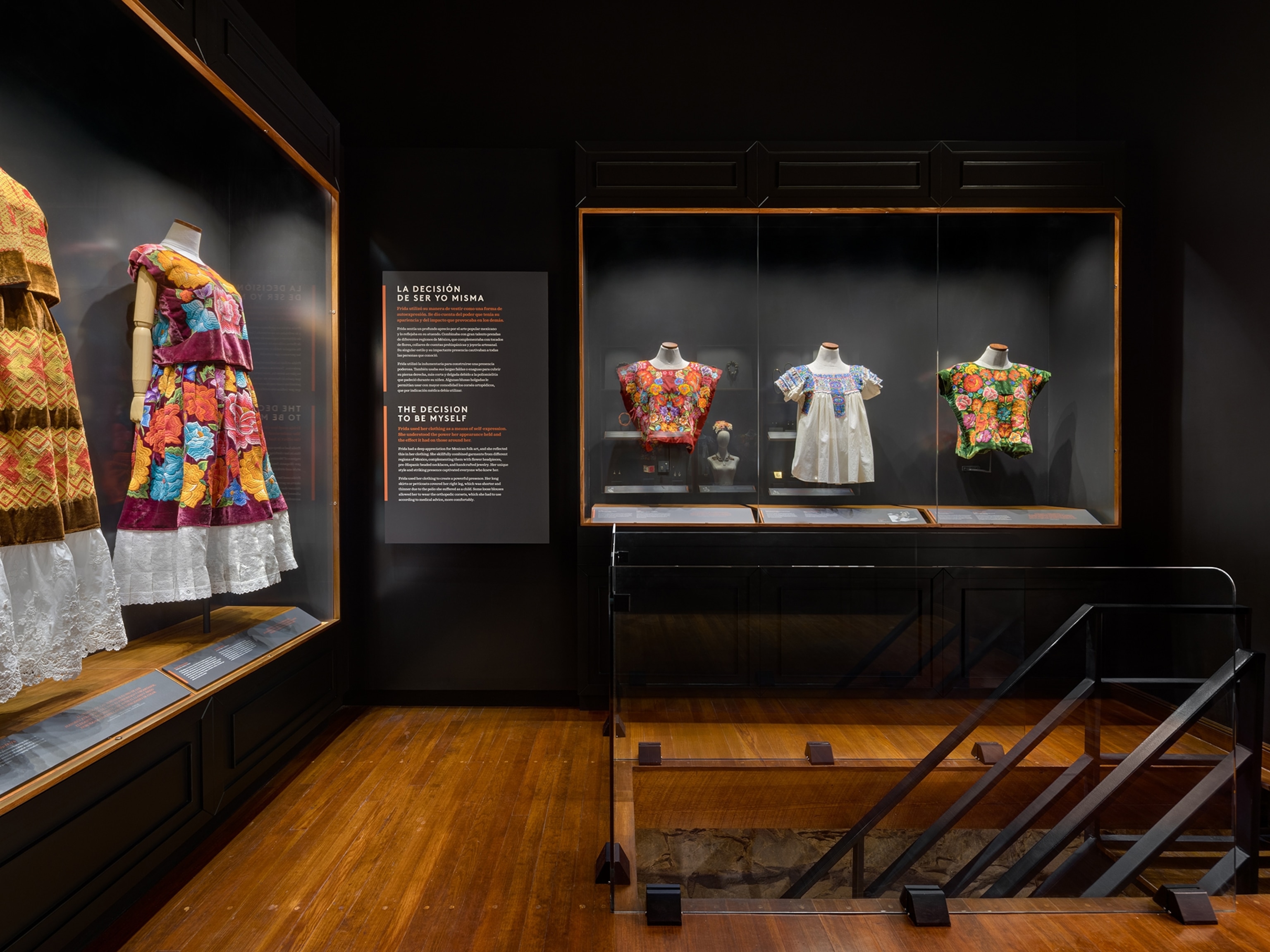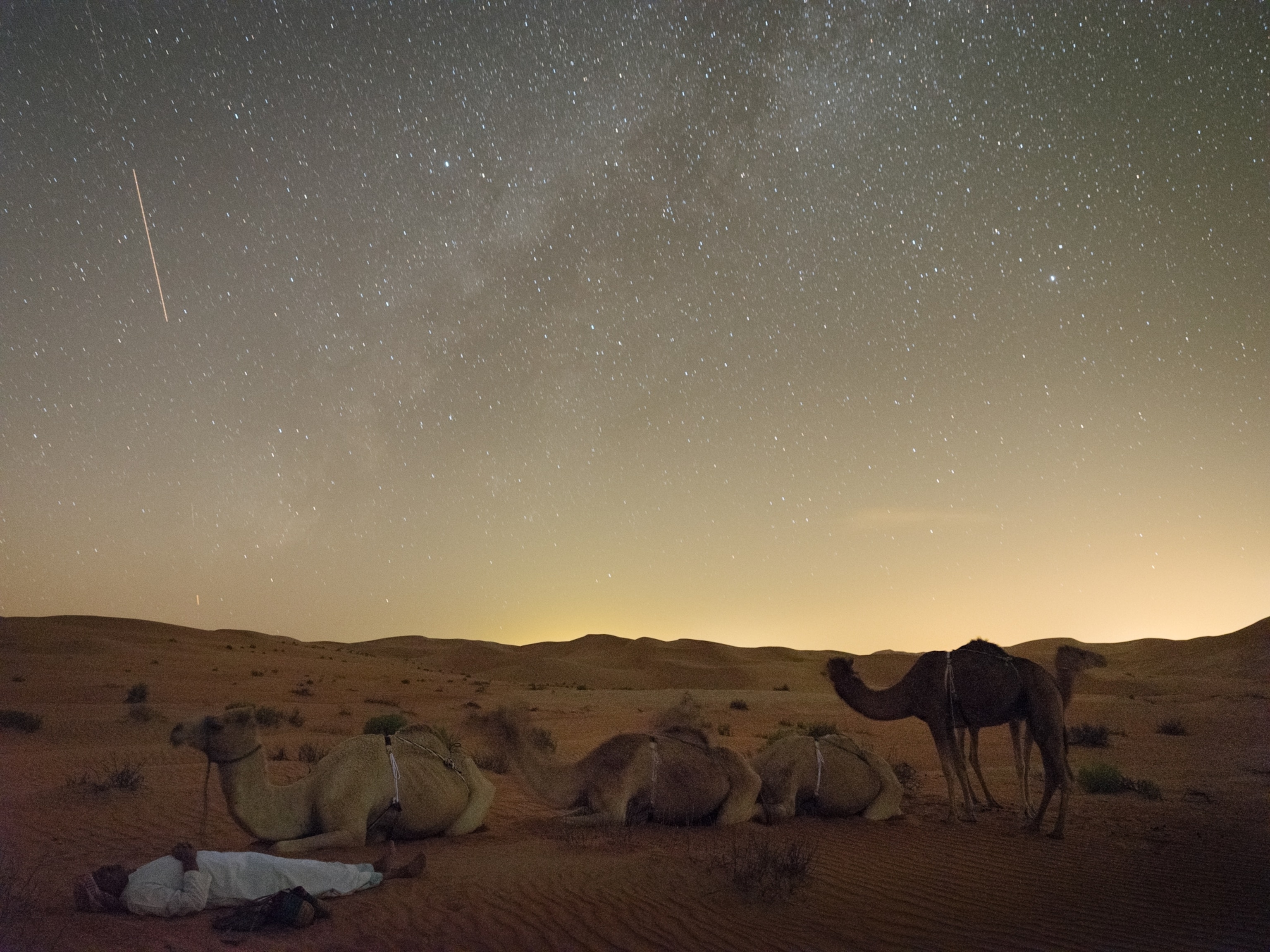
See Abu Dhabi like never before with these expeditions
From dune bashing to falconry to camel trekking in the Arabian desert, here are an array of ways to get the most out of your trip to Abu Dhabi.
The geography of the Emirate of Abu Dhabi—spread between Arabian Gulf beaches and one of the world’s most iconic deserts—means all roads lead to sand. For explorers, that’s a good thing.
First, some background on sand. Few may realize that sand is a geological oddity. It’s defined not by substance, but by size itself. Geologist Michael Welland, author of Sand: The Never-Ending Story, told me once that any granular object with a diameter between 0.06 and 2.0 millimeters qualifies as “sand.” It can be made of essentially anything—quartz, coral, shells, or lava.
There are certainly grains galore to be found in the Rub' al Khali (or Empty Quarter), a 250,000-square-mile desert that spreads across parts of the United Arab Emirates, Saudi Arabia, Oman, and Yemen. Most of Abu Dhabi’s best expeditions from the city go out into it. You needn’t go far.
Where to Go
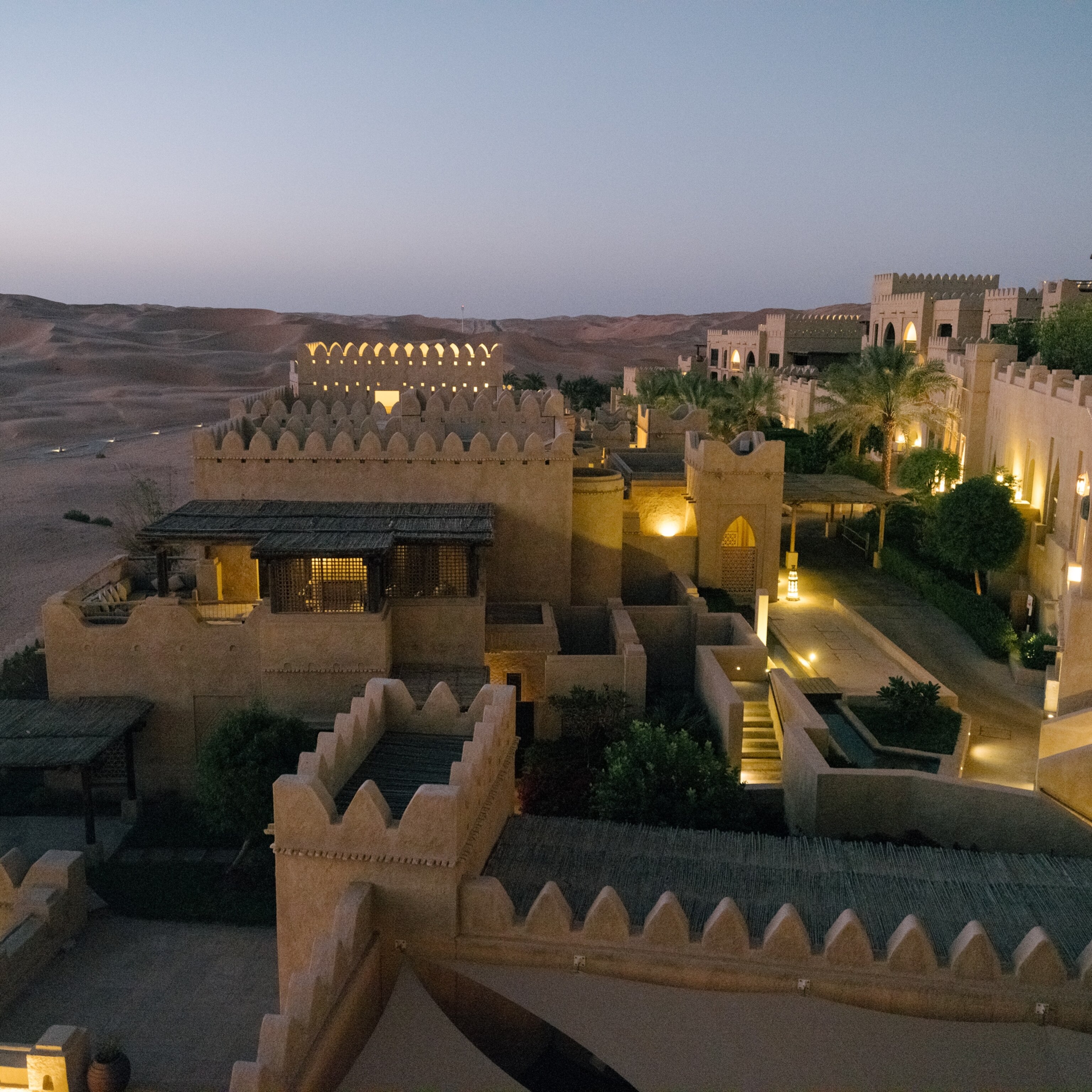
For luxury and a host of activities on offer, Qasr al Sarab is a marvelous “palace” resort with vaulted ceilings, towering columns, and interlaced arabesque flourishes in and out of its public halls, and about 200 rooms. The name of the resort, which Anantara opened in 2009, means “mirage palace,” and the complex certainly blends in with the surrounding layers of reddish orange dunes that tower to heights of 800 feet. The reason to come (other than its pools, tennis courts, and samples of dates and Arabic coffee in the library) is to get onto those dunes via horse, camel, fat tire bike, 4x4, or guided walks.
One of the most popular and rewarding activities here is camel trekking. Camels have a long history in the area, of course, and they are still highly prized. The Bedouin, a historic tribal group documented in Wilfred Thesiger’s remarkable travelogue Arabian Sands, called camels ata Allah (“God’s gift”). In the book, one companion tells Thesiger, “What other creature is as patient as a camel? That is the quality which above all else endears them to us Arabs.”
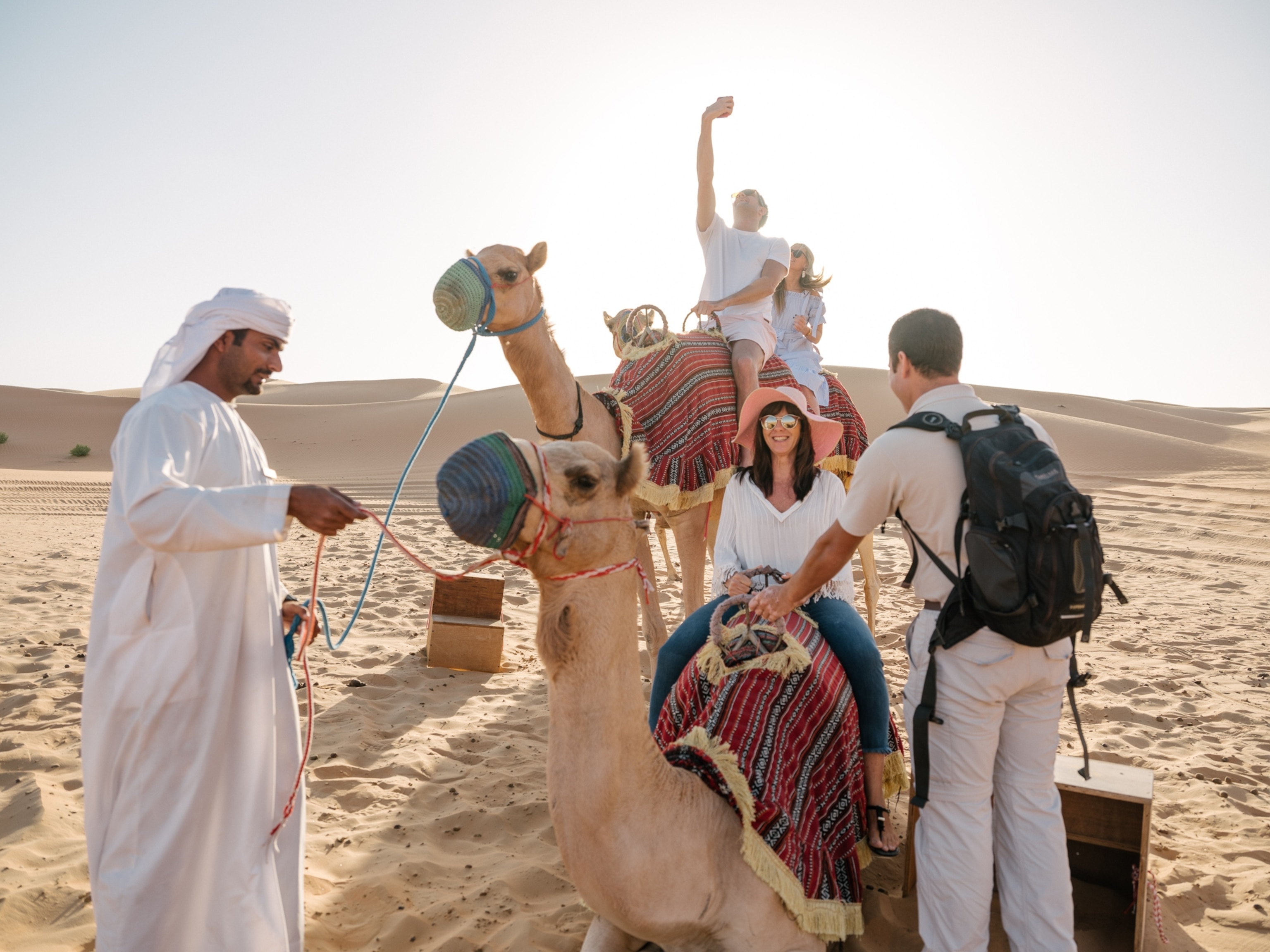
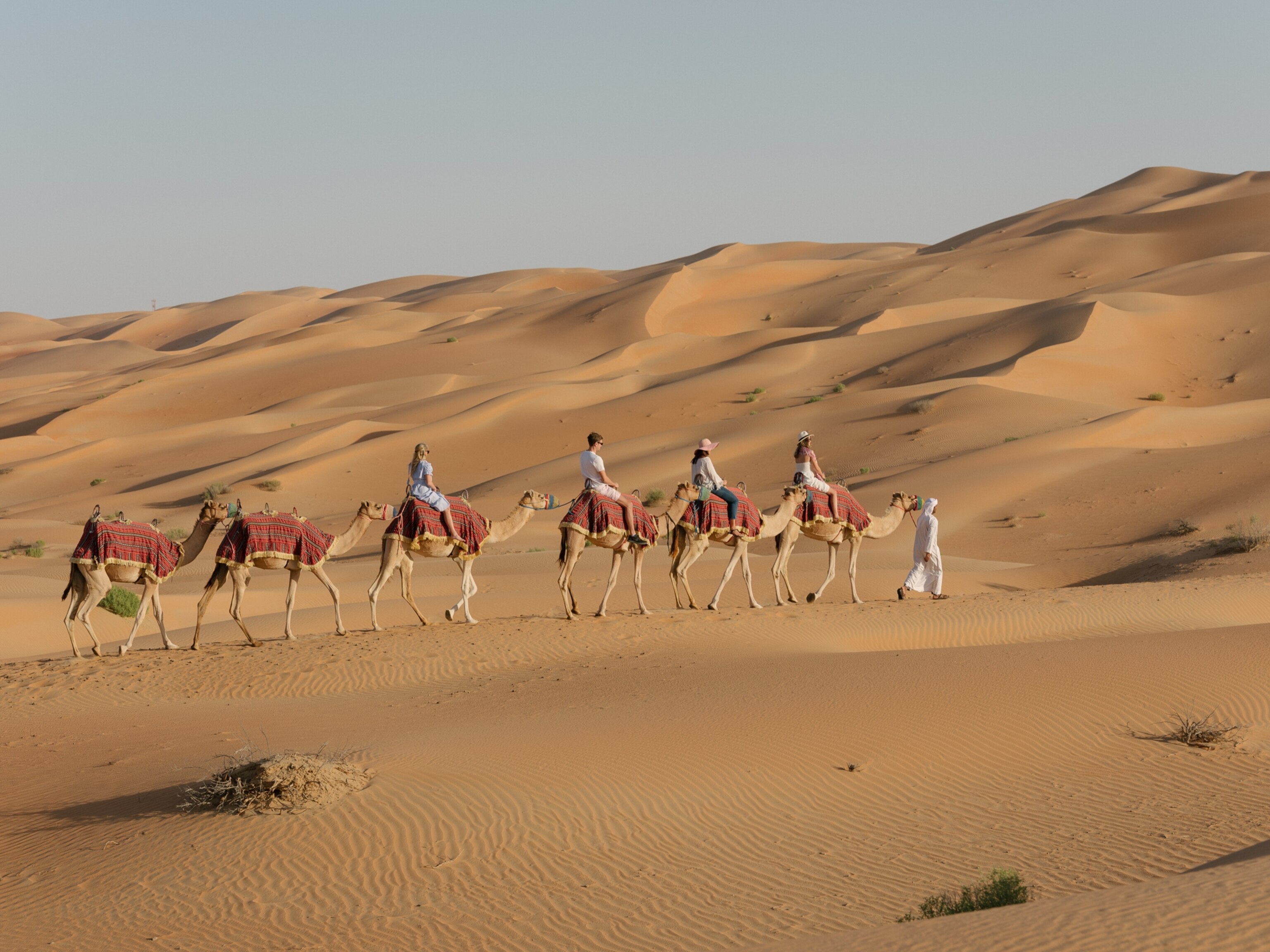
You can experience this legendary patience (and less often documented charm) on one-hour camel treks across the dunes. The ride is fairly structured, involving sudden jolts as your camel rises and sits, but it is irresistible fun—and it’s capped off with plenty of selfie taking and hug time with your camel.
Falconry is a custom linked with the Arabian Peninsula’s long nomadic history, and it is still revered to this day. The resort offers falcon shows where a pair from the resort’s peregrine and saker falcons make swooping dives at raw meat held on poles. It’s best just as the sun hits the dunes.
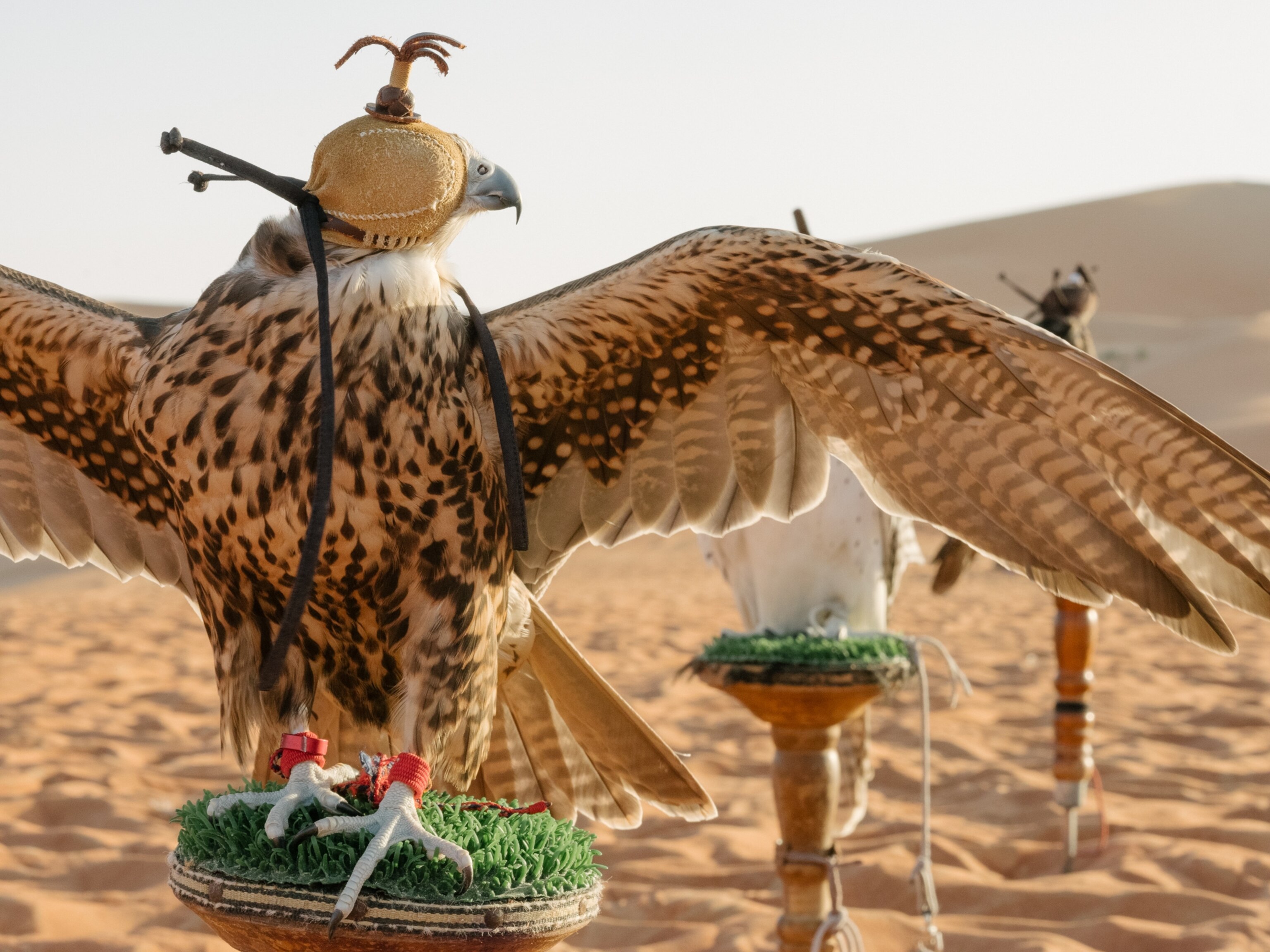
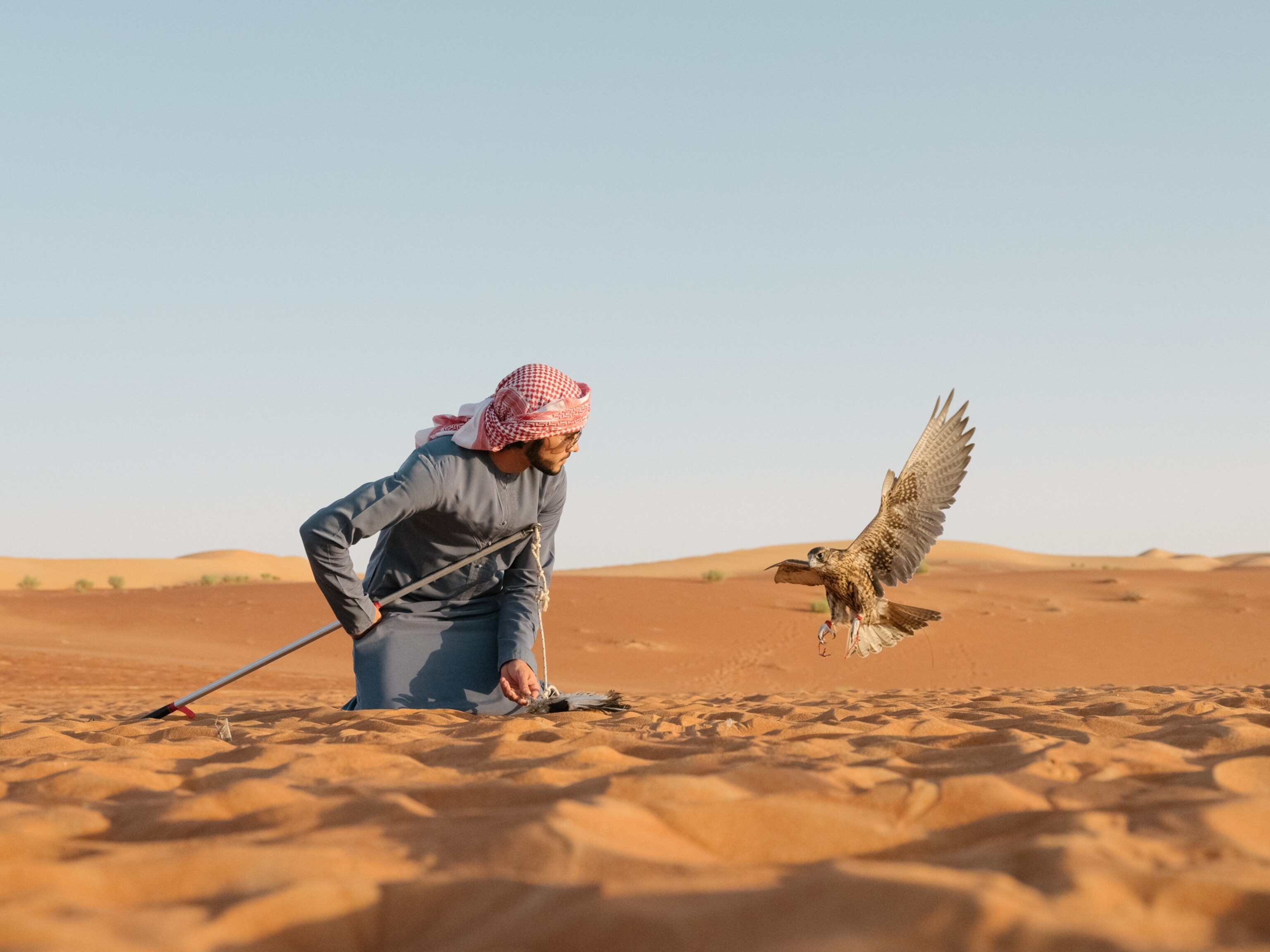
The wildest way to see the desert is by 4x4 on a dune-bashing trip. Just don’t eat beforehand. Drivers zoom along dune crests, making sudden roller-coaster swerves as tire-spun sand pours across the windshield. You can ask your driver to take it easy too. (Or “easy peasy,” as mine called it, without judgement. It was a necessary adjustment, as my local travel companion finished our ride minus a breakfast.)
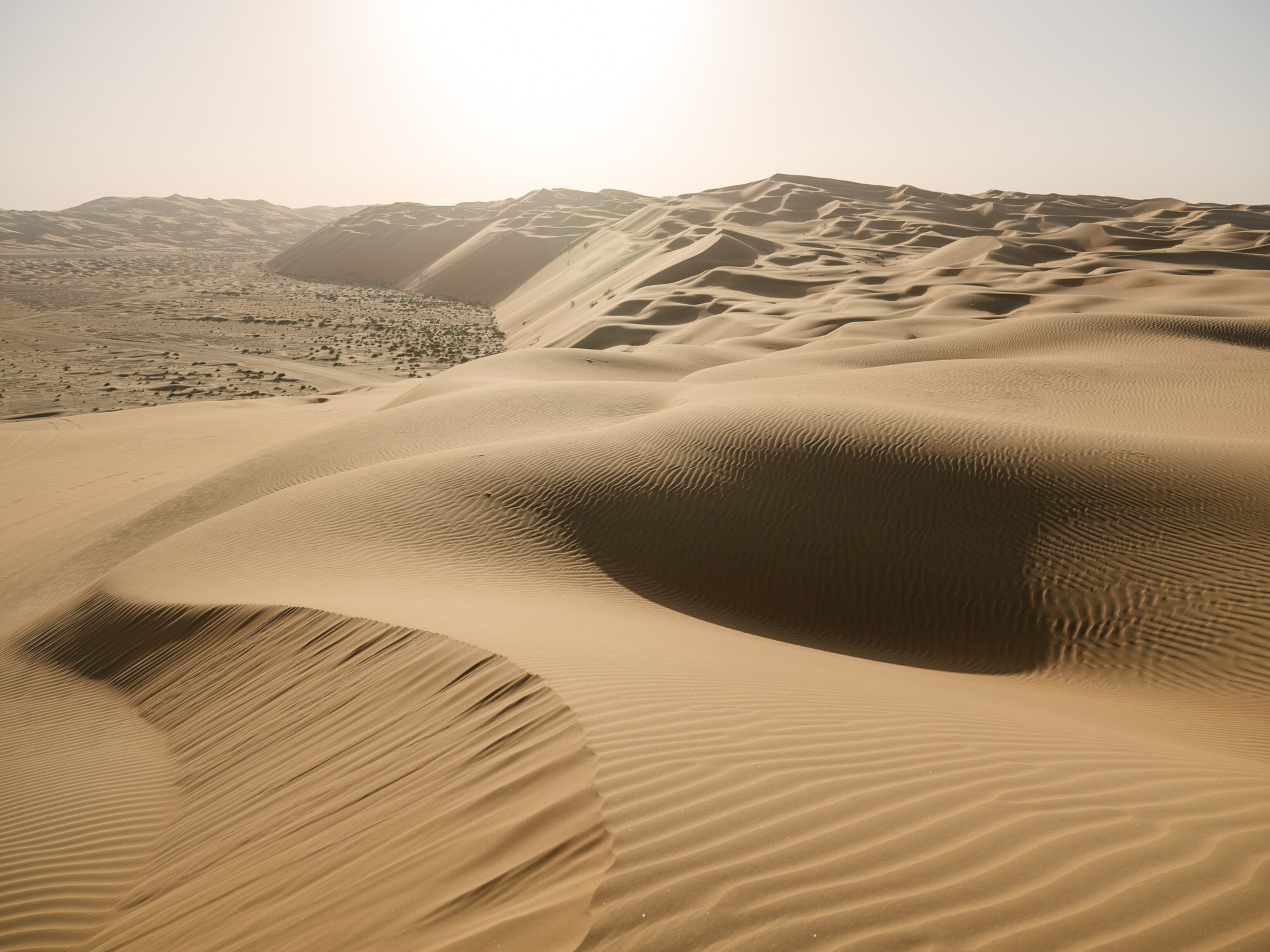
If dune bashing isn’t crazy enough for you, time your visit for the next nine-day Liwa Sports Festival at Moreeb Dune at the end of the year. The highlight attractions are 4x4 races down a 984-foot dune at a 50-degree decline, earning the site the local nickname “Scary Mountain.”
Experiencing the desert up close is one thing; seeing it from high above is another. Some of the best views in the region can be found just outside the city of Al Ain, atop Jebel Hafeet, a 4,100-foot peak made up of craggy limestone formations. The UNESCO site has long been a landmark (500 tombs have been discovered around its base). A twisting seven-mile road—popular with cyclists—weaves its way up past a hotel. It’s a fun drive too, ending at a viewing area with the spreading Empty Quarter reaching to the distant horizon.
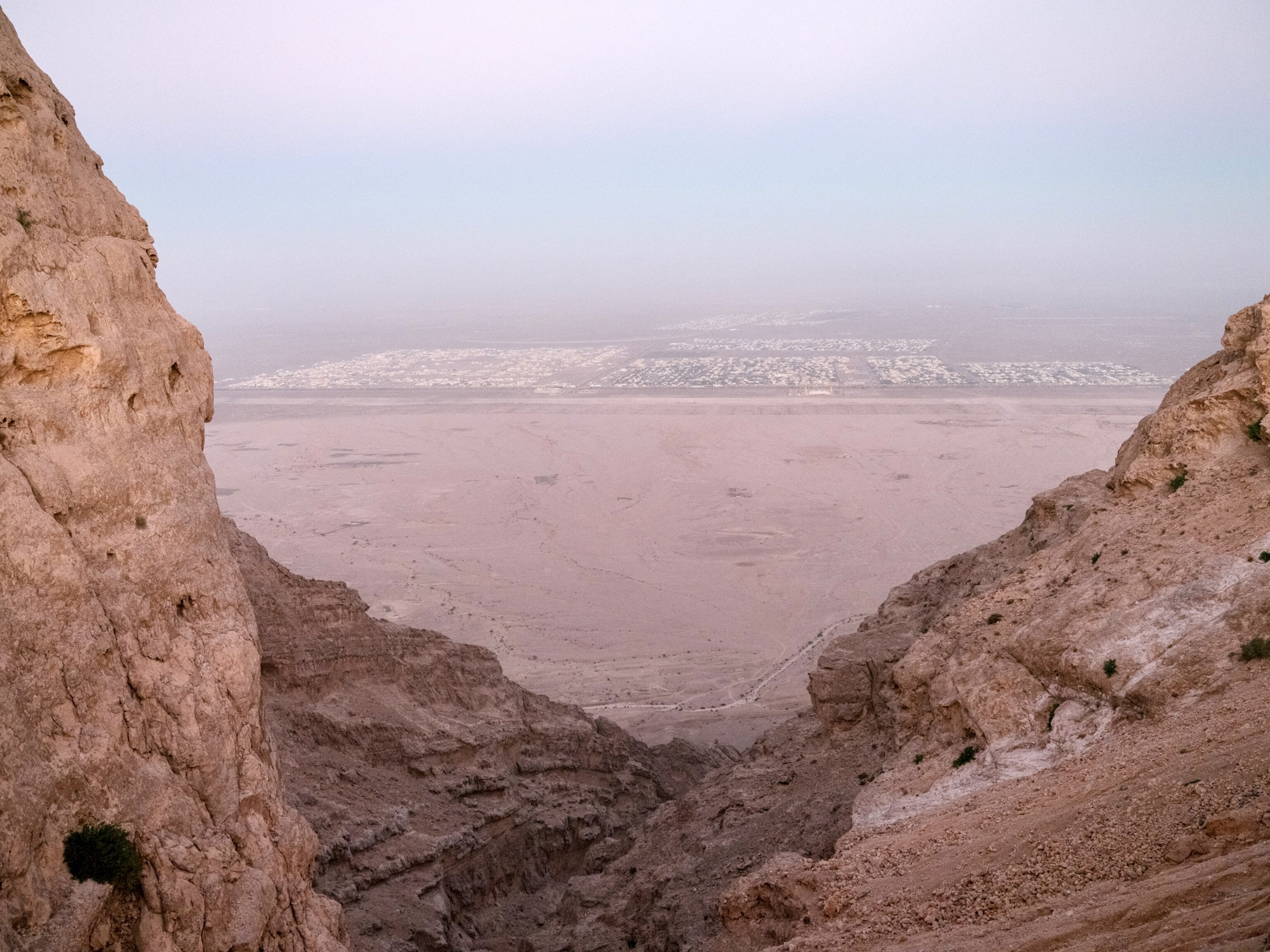
Hot springs have been discovered here in recent years as well. Grassy picnic areas at the base of the mountain are popular with locals who come to the two-year-old gents or ladies swimming pools. Entry is 20 dirhams (U.S. $6); pool temperatures reach 102°F.
(For more on Al Ain’s UNESCO sites and leafy oases, see our article.)
In Abu Dhabi city, you can explore by double-decker bus tours, but the best overview is via the Yellow Boat tours. If you want something more active, kayak the mangroves. (See our article on how to do this.)
Getting There
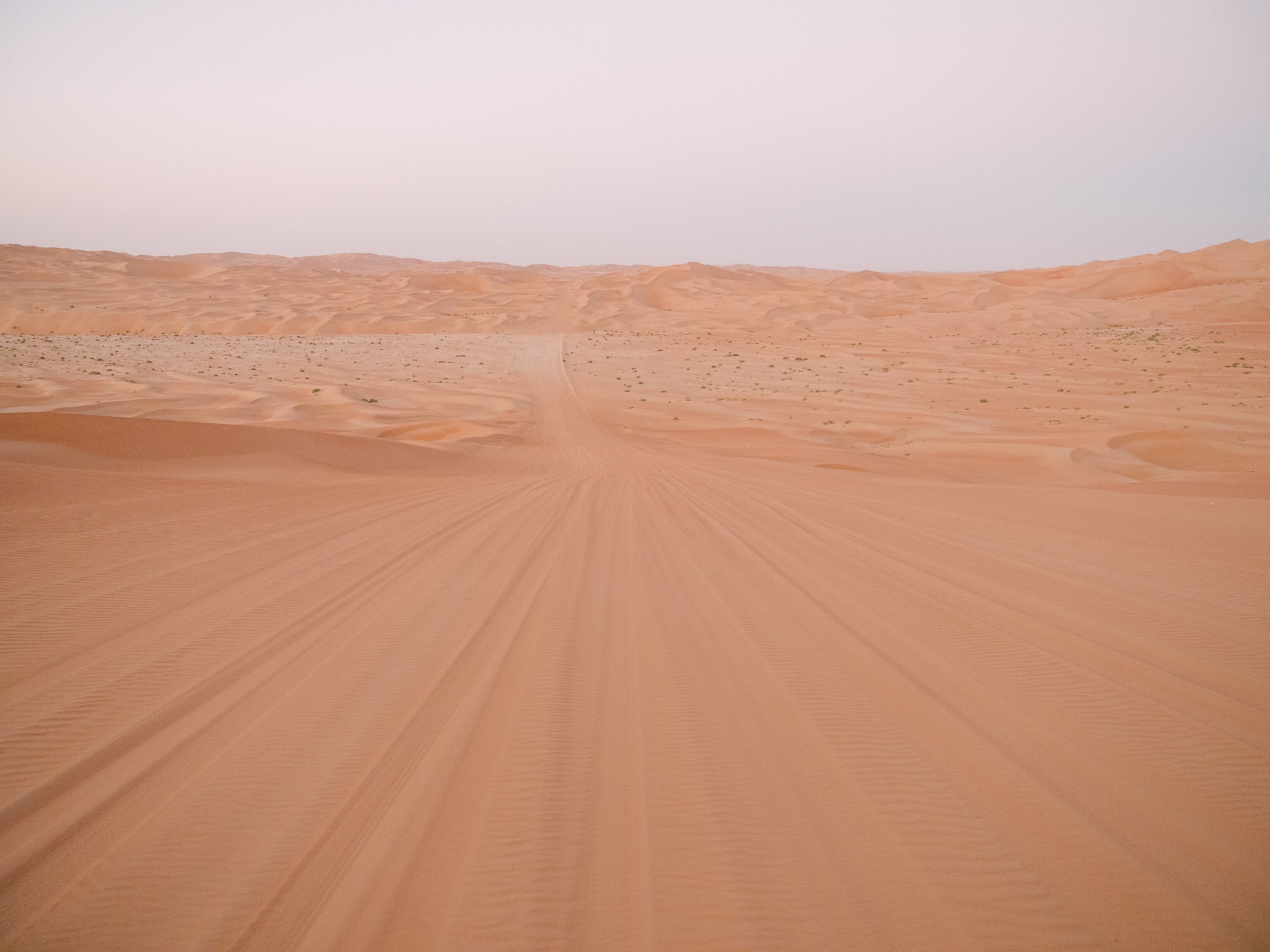
Qasr al Sarab is a 125-mile, two-hour drive from Abu Dhabi. Go via E11, then E65 past Hameem, then turn onto a seven-mile, winding ride through the desert.
Al Ain is a hundred miles east of Abu Dhabi, via E22.
Robert Reid is a digital nomad and editor-at-large for National Geographic Traveler. He's based in Portland, Oregon. Follow his next travel experiences on Instagram and Twitter.
